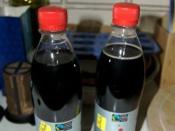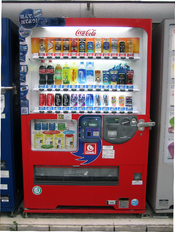1.Why is that soft drink industry so profitable?
(From Exhibit 1, it is observed that, assuming unchanged annual liquid consumption per capita, soft drink consumption, which can be extrapolated by deducted beer & wine consumption from total annual liquid consumption, is actually slightly lowered during 1970 to 2000 period. So we assumed the question is actually asking about CSD industry instead of aggregate soft drink industry.)
First of all, the soft drink industry is an profitable industry due to:1) its high concentration ratio: the top three companies account for 90% of total market share while Coca Cola and Pepsi along account for about 75%, forming approximate duopoly market pattern. 2) high entry barrier caused by patent and trade market protection for concentrate producers and extensive capital investment for bottlers. 3) high degree vertical integration. 4) economies of scale resulted from large market share by major players.
Secondly, market in US and potential market worldwide is huge.
CSD is top one among US liquid consumption list and per capita CSD consumption in other countries is still far less than that in US.
Thirdly, current players spend heavily on marketing to promote their brands. In the course of their marketing campaigns, they also increase the total market, something that a single firm might not have accomplished if there had been no competitors. Thus competition partly leads to the success of existing firms.
Also, both Coke and Pepsi used brand extension, either under a mega-brand or by promoting different brands under the same company, to get into many categories in the soft drink industry, achieving economies of scale in their operations.
Lastly, the concentrate production is a business with extremely low costs, resulting in a high operating margin. Marketing spending account for the highest percentage spending of sales, as branding is crucial...



Comment
Very good research into the historical and political background of the companies, and how the numbers game work, great for a technical report or anything pending with acounting or marketing classes
1 out of 1 people found this comment useful.